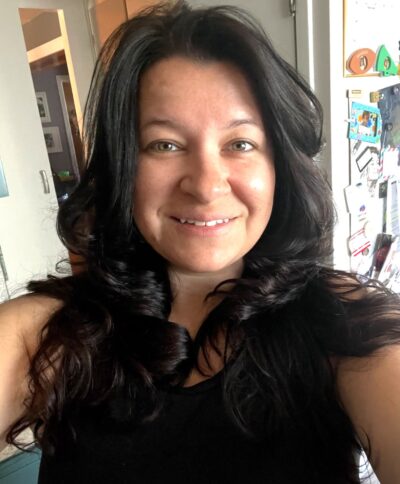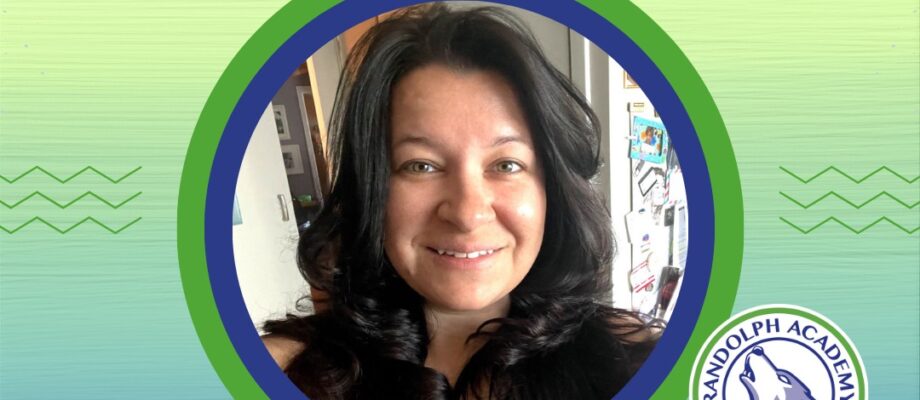This website uses cookies so that we can provide you with the best user experience possible. Cookie information is stored in your browser and performs functions such as recognising you when you return to our website and helping our team to understand which sections of the website you find most interesting and useful.
Like Her Students, STEAM Teacher Thrives in Nontraditional Setting
There’s a new face at Randolph Academy this year. Yet, with a schedule that includes seven classes taught to first through twelfth graders at both campuses, Lindsey Hanes wasn’t a stranger for long.
Mrs. Hanes is the district’s new STEAM teacher, a multi-discipline focus incorporating science, technology, engineering, the arts and math. The position reflects Randolph Academy’s increasing emphasis on the 21st century skills students must develop as they prepare for careers in the modern world.
Hanes was drawn to the role not only because of her love of science, but also from her experience working with students with behavioral challenges. As a result, she’s quite comfortable with the district’s nontraditional classrooms – a comfort which dates back to her first professional job.
“After earning my bachelor’s in anthropology from Buffalo State College, I landed a job as a personal aide at The Summit Center, which serves individuals with autism,” Hanes says. “Some of them were nonverbal, which caused me to develop creative communication skills and gain experience in applied behavior analysis.”
A series of promotions led to her becoming a teaching assistant, and suddenly she saw a path to a career in education – a field she planned on avoiding as a teenager.
“Growing up, I honestly didn’t think I’d like being a teacher,” the North Tonawanda, N.Y., native admits. “But, having worked in special education and with students who have unique challenges, I discovered that a nontraditional setting is where I thrive.”

Once Hanes found her passion, she never looked back. She went on to earn a master’s in early childhood education at the University at Buffalo, where she soon hopes to complete a doctoral degree as well in Learning and Teaching in Social Contexts.
Hanes understands the importance her coursework has for students in their quest to earn a high school diploma.
“Too many districts focus mainly on ELA (English Language Arts) & Math,” she explains. “So, to make progress in those areas, teachers wind up losing time (teaching) science.”
Many students aren’t exposed to some basic scientific principles, Hanes explains, and others struggle to comprehend them. However, when the arts are added to the process, she finds that comprehension becomes more achievable, especially for younger students.
Hanes enjoys presenting science in contexts that are useful in her students’ everyday lives. Her classes in sustainability, problem solving, robotics and consumer science are examples of topics to which students can more readily relate, regardless of their career paths.
STEAM disciplines aside, Hanes has found Randolph Academy’s culture to be a strong fit with her own as well.
“My role here is not just to be a teacher, but to identify problems of practice and ways I can change to ensure my students learn better,” she instructs. “I value problem-based learning and project-based learning, where I can run small trials and collect data to show how learning has occurred – even though it might be nontraditional.”
Hanes has also realized that much of what once soured her on a career in education were teachers who refused to learn new things to stay relevant for the benefit of their students. Today, she finds inspiration in those who resist the lure of complacency.
“We’ve all seen those ‘lifers’ who are set in their ways,” she says. “It’s the other ones who inspire me – the experienced educators who are always ready for a new challenge. They’re willing to change, learn and focus on what works best for these kids in their room today – not just the ones who came years before them.”
This attitude comes in handy as she commutes between Randolph Academy’s campuses. Although covering both has its challenges, Hanes also sees some advantages.
“It’s almost like working for two different places,” she explains. “Traveling from one to the other provides a break, of sorts. It’s also forced me to grow in ways I didn’t foresee.”
Lastly, she believes her other job – as mother to her and her husband’s four children (ranging from ages nine through 17), gives her added insights and credibility. “My students see that, and I think I have an easier time relating to and connecting with them as a result,” she says.

